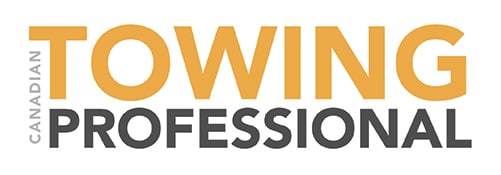DUBLIN–(BUSINESS WIRE)–The “U.S. Automotive Tire Market Research Report: By Vehicle, Design, Type, End-Use – Industry Size, Share Analysis and Growth Forecast to 2024” report has been added to ResearchAndMarkets.com’s offering.
From $57.9 billion in 2018, the market is expected to garner $75.4 billion by 2024, registering a 5.4% CAGR during the forecast period (2019-2024). The market is witnessing growth due to the prospering automotive industry and high demand for tire replacement due to the improving average age of vehicles.
Low-rolling-resistance tires that are more fuel-efficient than conventional tires are trending in the U.S. automotive tire market. Additionally, they also provide enhanced durability and have a better grip for increased safety. Technological advancements have not only led to improvements in vehicles, thereby leading to their high demand, but they have also influenced the tires, which are now being made for improved functionality. For instance, innovation by market players in this field have led to the development of ultra-high-performance tires that are highly reliable and perform well at high speeds and on rough terrains.
The increasing average life of vehicles is a major factor driving the U.S. automotive tire market. Presently in the country, vehicles have an average life of 13-17 years. This can be attributed to the technical advancements and fierce competition in the market, which is why automobile manufacturers have to provide top-quality products in all aspects. As vehicles are supposed to last for a long time, the demand for tire replacement is increasing. Another contributing factor in the high tire demand is the increasing driving range of vehicles, which leads to increased wear and tear of tires.
Key Topics Covered
Chapter 1. Research Background
1.1 Research Objectives
1.2 Market Definition
1.3 Research Scope
1.3.1 Market Segmentation by Vehicle
1.3.2 Market Segmentation by Design
1.3.3 Market Segmentation by Type
1.3.4 Market Segmentation by End Use
1.3.5 Analysis Period
1.3.6 Market Data Reporting Unit
1.3.6.1 Volume
1.3.6.2 Value
1.4 Key Stakeholders
Chapter 2. Research Methodology
2.1 Secondary Research
2.2 Primary Research
2.2.1 Breakdown of Primary Research Respondents
2.2.1.1 By industry participant
2.2.1.2 By company type
2.3 Market Size Estimation
2.3.1 Baseline Factors
2.3.1.1 Vehicle sales and fleet size
2.3.1.2 Replacement tire sales
2.3.2 U.S. Automotive Tire Market Estimation
2.4 Data Triangulation
2.5 Assumptions for the Study
Chapter 3. Executive Summary
Chapter 4. Introduction
4.1 Definition of Market Segments
4.1.1 By Vehicle
4.1.1.1 Two-wheeler
4.1.1.2 Passenger vehicle
4.1.1.3 Light commercial vehicle
4.1.1.4 Medium and heavy commercial vehicles
4.1.2 By Design
4.1.2.1 Radial
4.1.2.2 Bias
4.1.3 By Type
4.1.3.1 Winter
4.1.3.2 Summer
4.1.3.3 All-season
4.1.4 By End Use
4.1.4.1 OEM
4.1.4.2 Aftermarket
4.2 Value Chain Analysis
4.3 Market Dynamics
4.3.1 Trends
4.3.1.1 Development of advanced tires
4.3.2 Drivers
4.3.2.1 Growth in the automotive industry
4.3.2.2 High tire replacement rate due to increase in the average lifespan of vehicles
4.3.2.3 Impact analysis of drivers on market forecast
4.3.3 Restraints
4.3.3.1 Fluctuating raw material prices
4.3.3.2 Increasing longevity of tires affecting aftermarket sales
4.3.3.3 Impact analysis of restraints on market forecast
4.3.4 Opportunities
4.3.4.1 Increasing demand for electric vehicles
4.4 Porter’s Five Forces Analysis
4.4.1 Bargaining Power of Buyers
4.4.2 Bargaining Power of Suppliers
4.4.3 Intensity of Rivalry
4.4.4 Threat of New Entrants
4.4.5 Threat of Substitutes
Chapter 5. Regulatory Landscape
5.1 Overview
5.2 State-Wise Regulations
5.2.1 Alabama
5.2.2 Alaska
5.2.3 Arkansas
5.2.4 California
5.2.5 Colorado
5.2.6 Connecticut
5.2.7 Delaware
5.2.8 Georgia
5.2.9 Idaho
5.2.10 Illinois
5.2.11 Indiana
5.2.12 Iowa
5.2.13 Louisiana
5.2.14 Maine
5.2.15 Massachusetts
5.2.16 Michigan
5.2.17 Missouri
5.2.18 Montana
5.2.19 Nevada
5.2.20 New Jersey
5.2.21 New York
5.2.22 North Dakota
5.2.23 Ohio
5.2.24 Oklahoma
5.2.25 Rhode Island
5.2.26 South Dakota
5.2.27 Texas
5.2.28 Washington
5.2.29 Wisconsin
5.2.30 Wyoming
Chapter 6. U.S. Market Size and Forecast
6.1 By Vehicle
6.2 By Design
6.3 By Type
6.4 By End-use
Chapter 7. Competitive Landscape
7.1 Market Share Analysis of Key Players
7.2 Strategic Developments of Key Players
7.2.1 Mergers & Acquisitions
7.2.2 Product Launches
7.2.3 Partnerships
7.2.4 Facility Expansions
7.2.5 Client Wins
7.2.6 Other Developments
Chapter 8. Company Profiles of OEMS
8.1 The Goodyear Tire & Rubber Company
8.1.1 Business Overview
8.1.2 Product & Service Offerings
8.1.3 Key Financial Summary
8.2 Michelin North America Inc.
8.3 Cooper Tire & Rubber Company
8.4 Pirelli & C. S.p.A.
8.5 Continental Tire the Americas LLC
8.6 Hankook Tire Company Limited
8.7 Bridgestone Americas Inc.
8.8 Kumho Tire U.S.A. Inc.
8.9 Toyo Tire Corporation
8.10 Yokohama Tire Corporation
For more information about this report visit https://www.researchandmarkets.com/r/uggql3
Contacts
ResearchAndMarkets.com
Laura Wood, Senior Press Manager
press@researchandmarkets.com
For E.S.T Office Hours Call 1-917-300-0470
For U.S./CAN Toll Free Call 1-800-526-8630
For GMT Office Hours Call +353-1-416-8900












